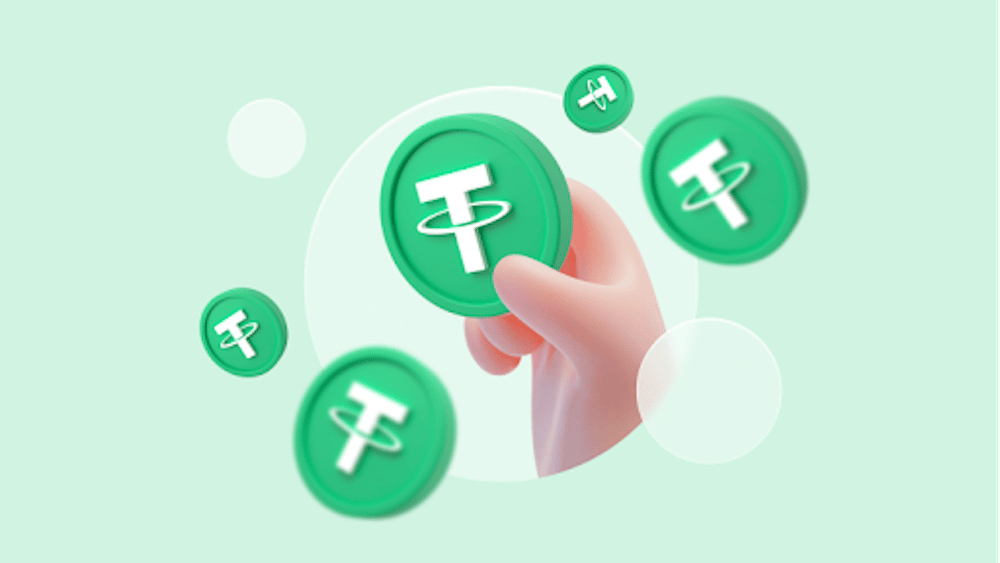Tether (USDT) is the most common stablecoin and the most widely traded cryptocurrency in the world. Stablecoins are cryptocurrencies whose value is tied to another asset, most often to a fiat currency (for example, to the dollar, euro, pound, yuan). Stablecoins are used by people who want to store their funds in cryptocurrency and, simultaneously, avoid the volatility (price fluctuations) features of many digital currencies. The USDT rate is pegged to the US dollar rate in a ratio of 1:1. This means that the cost of 1 USDT = $1. This is usually the case, although there are minor deviations. It would be better to say that the price of 1 USDT tends to the $1. Tether company claims that the value of USDT is always 100% secured by assets in their reserve. In other words, the reserve guarantees that anyone who wants to convert USDT into fiat currency will be able to do so. Tether publishes a quarterly report showing the breakdown of its reserve assets by class and updates the value of the total value of these assets daily.
USDT does not have its own blockchain — instead, it works as a second-layer token based on the blockchains of other cryptocurrencies. Knowledge of the blockchain networks in which USDT works will be useful at the stage when we need to transfer USDT to another person or to receive a transfer from another person to your wallet. Some of the most popular networks supported by USDT are TRC-20 and ERC-20.
Tether Use Cases
Tether is the most popular and capitalized stablecoin on the market. Often, USDT is used by traders to store value when they do not want to convert crypto into fiat in order not to overpay on fees, but at the same time, the cryptocurrency exchange rate is falling, and traders need a more stable asset.
The main advantage of USDT is its tight pegging to the US dollar. Despite some deviations, USDT remains one of those stablecoins whose exchange rate most accurately mirrors the exchange rate of the fiat currency. For this reason, USDT is unsuitable for making money on price fluctuations, although this is also possible thanks to arbitration. Nevertheless, stablecoin has many exciting and profitable use cases, including:
- Hedging volatility risks. Users buy USDT during bearish trend periods;
- Fast and low-fee international transfers;
- Profit-taking in cryptocurrency exchange trading;
- Earning on crypto loans. You can lend stablecoins at interest to DeFi platforms. Your passive income can be more than 10%.
- Payment tool. Due to small price fluctuations, USDT is increasingly used in daily settlements and is attractive to business owners.
- A measure of price. It is convenient to use a stablecoin to determine the value of a particular product without reference to the current exchange rate and fiat money. Given the current level of inflation, such cryptocurrencies may become the main measure of price in the future.
There are other examples of the use of stablecoins that have yet to be implemented. These include increasing the reliability and benefits of transfers, lending, etc.
How to Use $USDT?
You can store Tether on a USDT wallet directly in your exchange account or a separate crypto wallet. In addition, each centralized exchange has its own built-in crypto wallet. That is, you can store USDT on Binance, Kraken, OKX, ByBit, etc. This is convenient if you regularly use USDT for operations on the exchange.
However, a more reliable way to store Tether is to have a separate USDT wallet that does not depend on the exchange. Before we jump into how to create a USDT wallet, we first need to know what kind of wallet to choose. There are different types of wallets: hot and cold, hardware, desktop, web wallets, mobile, etc. The choice of wallet is based on how you want to use USDT. If your goal is long-term storage to hedge volatility risks, then a cold wallet is quite suitable for you. This storage method is less convenient, albeit with maximum security. If you want to use USDT daily (DeFi platforms, money transfers, paying for goods and services, and so on), then your choice will be a web or mobile wallet. SimpleHold provides two versions of a crypto wallet for your USDT coins. You can use a mobile wallet to send and receive USDT on the go. In addition, you can use a web wallet for quick access to DeFi apps and trading.


